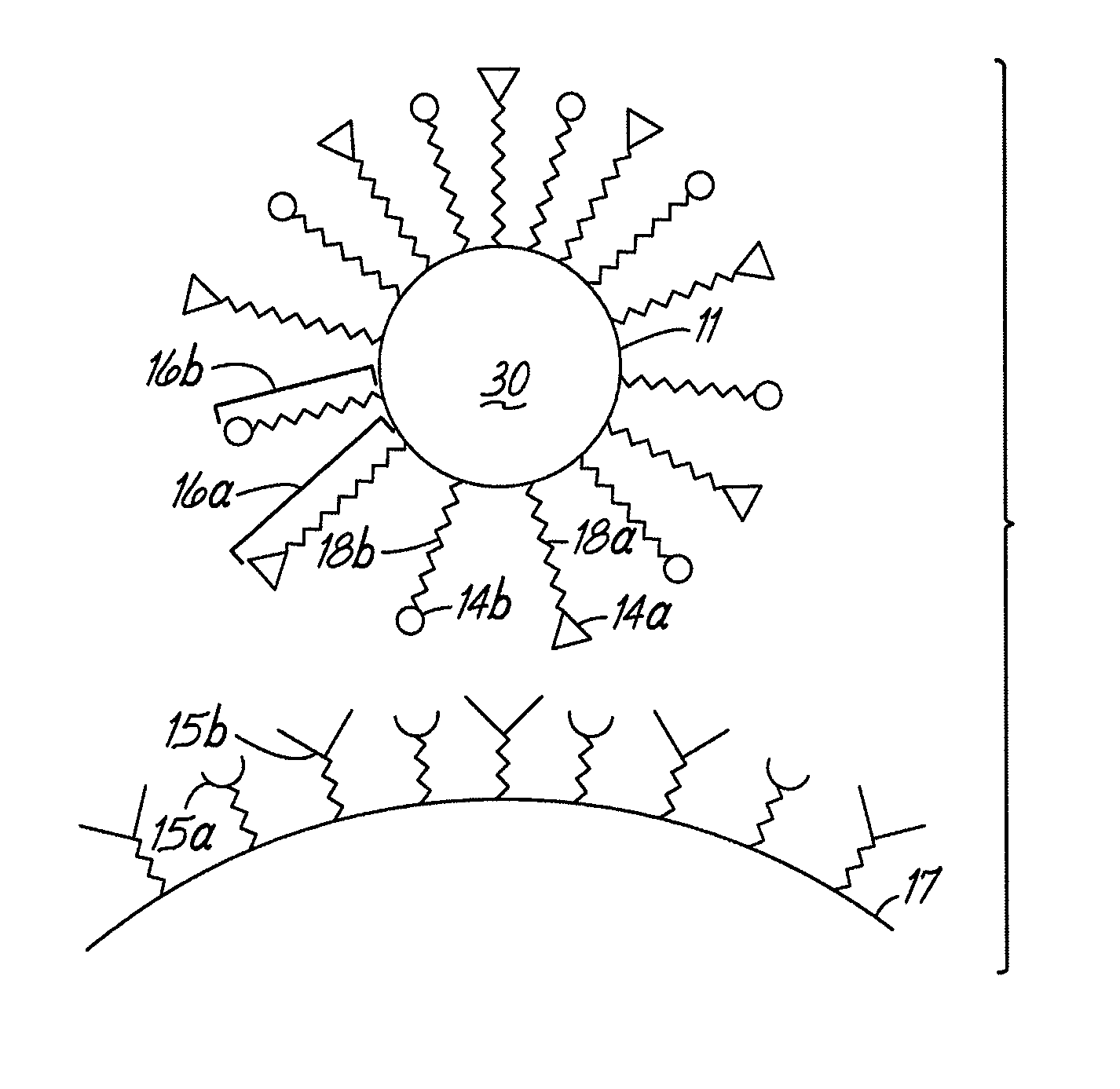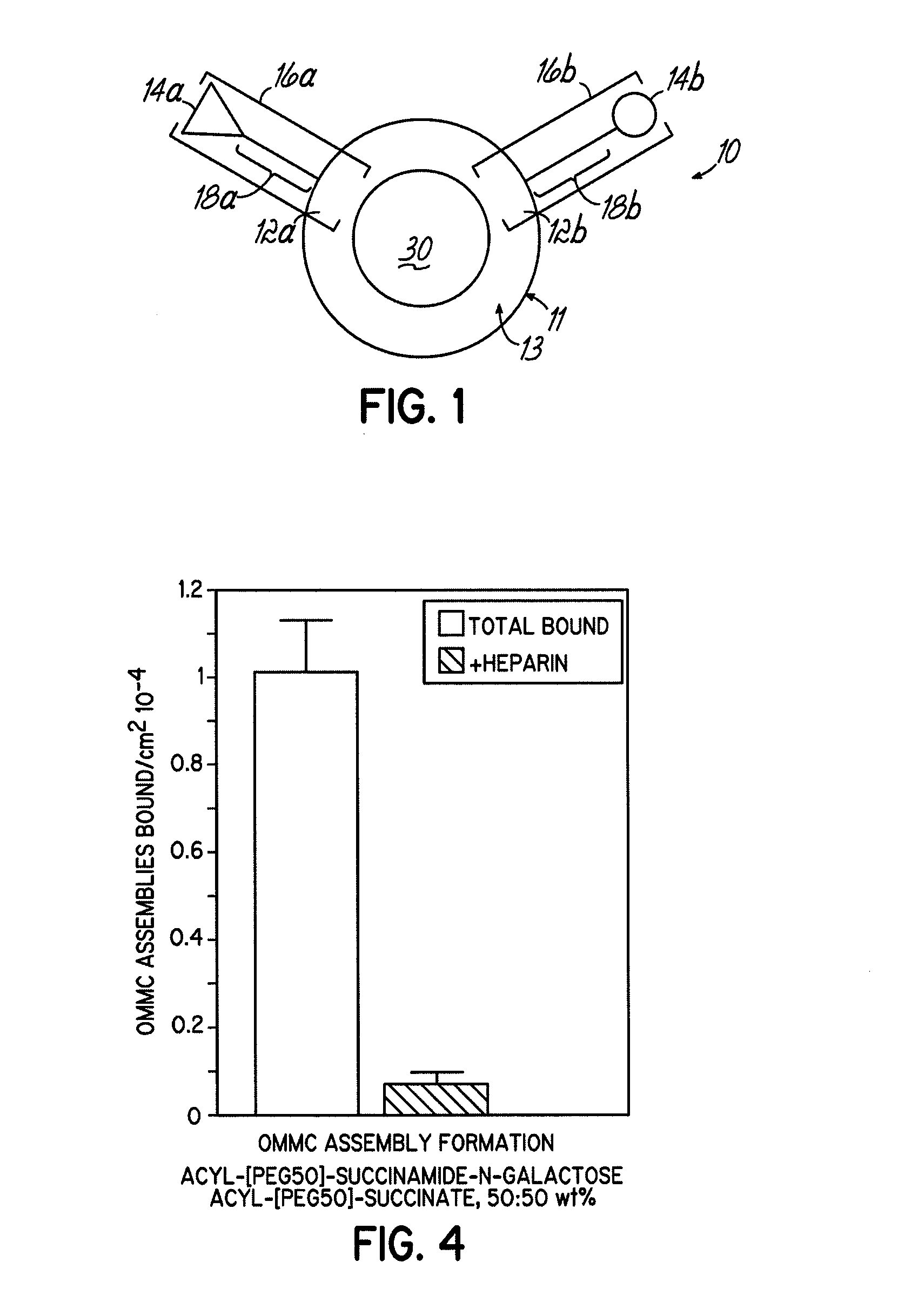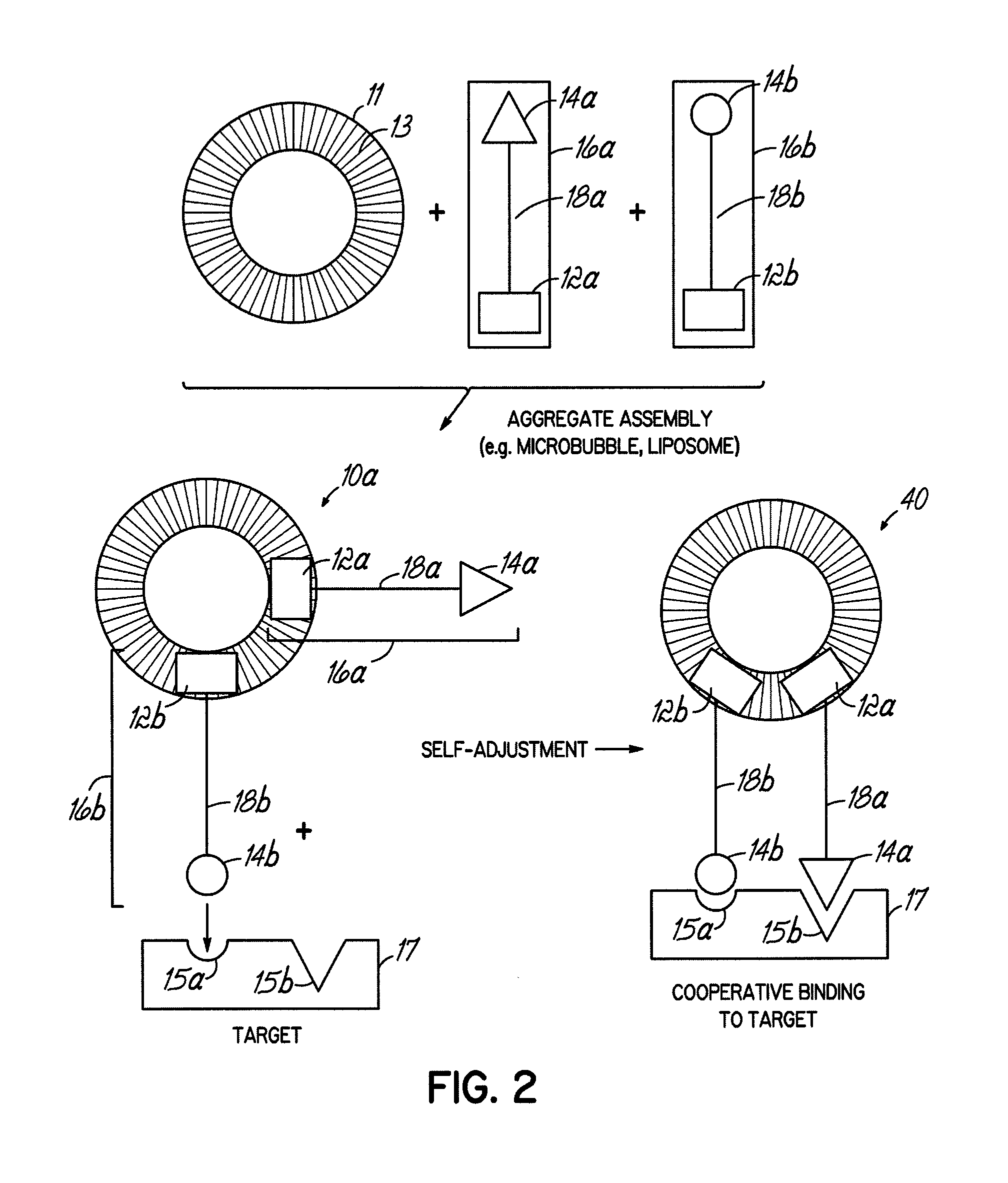Multicomponent assemblies having enhanced binding properties for diagnosis and therapy
a multi-component, enhanced technology, applied in the preparation of macromolecular non-active ingredients, echographic/ultrasound imaging preparations, sugar derivative preparations, etc., can solve the problems of weakly binding ligands, weakly binding compounds, and generally not considered to be useful for targeted imaging and therapeutic applications
- Summary
- Abstract
- Description
- Claims
- Application Information
AI Technical Summary
Benefits of technology
Problems solved by technology
Method used
Image
Examples
example 1
Preparation of OMMC Assembly Having One Binding Domain and a Terminal Carboxylate Binding Region, and Containing Gas (Docosanoate (C21CO2—); Octacosanoate (C27CO2—); and Succinylated PEG[100]stearate Formulated with n-Perfluorobutane)
[0045]To an 8 dram (29.6 mL) vial was added docosanoic acid (10.0 mg, Sigma, ˜99%); octacosanoic acid (10 mg, Aldrich, ˜98%) and 22 mg of succinylated PEG[100]stearate weighed on a Mettler® analytical balance. The mixture was dissolved into about 1 mL of dichloromethane (distilled Mallinckrodt Ultimar®) using mild heating. Dichloromethane was completely removed by the application of heat under a flow of nitrogen (Air Products, High Purity Grade). Excess sodium hydrogen carbonate (about 100 mg, Aldrich, ˜99.7%) was placed in the flask along with 10 mL of 0.9% sodium chloride solution used for irrigation (Baxter, USP).
[0046]The tip of the insonation probe, Heat Systems Sonicator® Ultrasonic Processor XL (Heat Systems, Inc., Farmingdale, N.Y.) Model XL 202...
example 2
Preparation of OMMC Assembly with One Binding Domain and a Terminal Galactosamide Binding Region, and Containing Gas (Docosanoate (C21CO2—); Octacosanoate (C27CO2—); and Octahexadecanoyl[poly(ethylene glycol) 5,000]Succinamic-Galactosyl amide Formulated with n-Perfluorobutane)
[0048]To an 8 dram (29.6 mL) vial was added docosanoic acid (10.0 mg, Sigma, ˜99%); octacosanoic acid (10 mg, Aldrich, ˜98%) and 22 mg of octahexadecanoyl[poly(ethylene glycol) 5,000]succinamicgalactosyl amide (prepared by the reaction of succinylated PEG[100]stearate, DCC and D-galactosamine (Aldrich)) weighed on a Mettler® analytical balance. The mixture was dissolved into about 1 mL dichloromethane (distilled Mallinckrodt Ultimar®) using mild heating. The dichloromethane was completely removed by the application of heat under a flow of nitrogen (Air Products, High Purity Grade). Excess sodium hydrogen carbonate (˜100 mg, Aldrich®, ˜99.7%) was placed in the flask along with 10 mL of 0.9% sodium chloride solut...
example 3
Preparation of OMMC Assembly with Two Binding Domains (Terminal Carboxylate, Terminal Galactosamide) and Containing Gas (Docosanoate (C21CO2—); Octacosanoate (C27CO2—); Succinylated PEG[100]stearate and Octahexadecanoyl[poly(ethylene glycol) 5,000]Succinamic-Galactosyl amide Formulated with n-Perfluorobutane)
[0051]To an 8 dram (29.6 mL) vial was added docosanoic acid (10.0 mg, Sigma, ˜99%); octacosanoic acid (10 mg, Aldrich, ˜98%), 11 mg of octahexadecanoyl[poly(ethylene glycol) 5,000]succinamicgalactosyl amide (prepared by the reaction of succinylated PEG[100]stearate, DCC and D-galactosamine (Aldrich)), and 11 mg of succinylated PEG[100]stearate weighed out on a Mettler® analytical balance. The mixture was dissolved into about 1 mL dichloromethane (distilled Mallinckrodt Ultimar®) using mild heating. The dichloromethane was completely removed by the application of heat under a flow of nitrogen (Air Products, High Purity Grade). Excess sodium hydrogen carbonate (˜100 mg, Aldrich, ˜...
PUM
 Login to View More
Login to View More Abstract
Description
Claims
Application Information
 Login to View More
Login to View More - R&D
- Intellectual Property
- Life Sciences
- Materials
- Tech Scout
- Unparalleled Data Quality
- Higher Quality Content
- 60% Fewer Hallucinations
Browse by: Latest US Patents, China's latest patents, Technical Efficacy Thesaurus, Application Domain, Technology Topic, Popular Technical Reports.
© 2025 PatSnap. All rights reserved.Legal|Privacy policy|Modern Slavery Act Transparency Statement|Sitemap|About US| Contact US: help@patsnap.com



